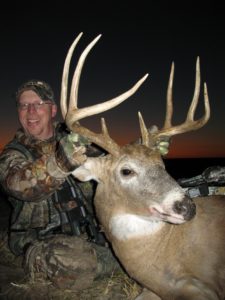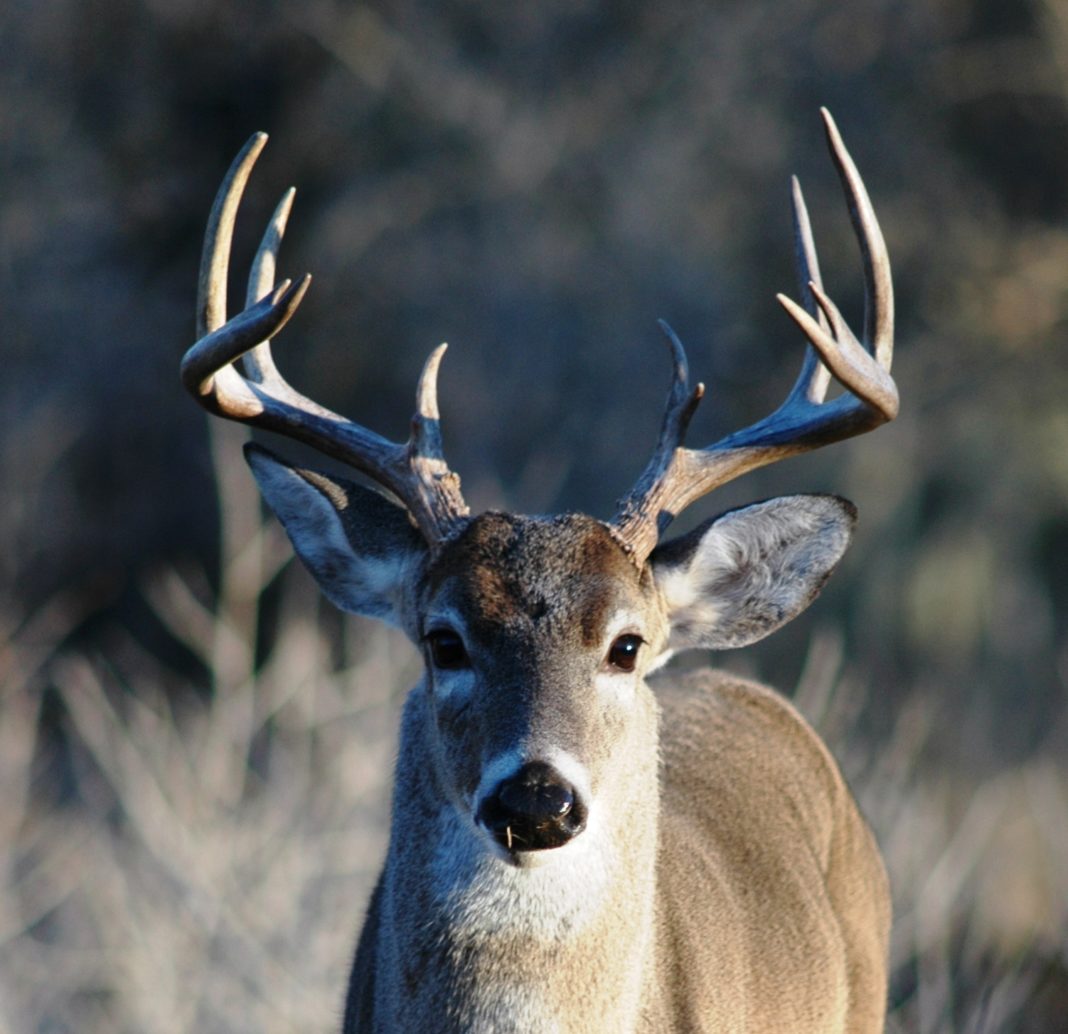Minerals are as much a need to whitetail deer as humans, yet growing bucks can’t shop at a health-food store like we can. We want deer to be healthy and it doesn’t hurt if they add more mass to their antlers in the process. For that reason, many hunters provide salt blocks, mineral blocks, and other supplemental minerals for antler growth and health. Seeing a large white block of salt in a cattle field is common, so hunters reason, “if it’s good for cattle, it must be good for whitetail deer.”
For many years, putting out salt blocks for deer was viewed as unethical and possibly illegal, yet thinking and state laws have changed. Growing up, there was something called a “squirrel salt block” where a hunter put a chunk of salt in a burlap bag and hung it over a limb. Rain dissolved the salt and deer would find and eat the sodium on the ground in a way that passing hunters would not notice.
Make and Inexpensive Lick
 Developing a mineral lick or site has many benefits over using feed, even that which includes basic minerals. First, minerals that come in blocks and “rocks” are meant to last a long time and you won’t have to continually replace them. Also, minerals are often treated differently than “bait.” For example in Maryland, putting out minerals won’t get you in trouble when turkey or bear hunting, since the regulations specifically allow it. Minerals are relatively inexpensive, especially if you take the rancher approach. My local Tractor Supply sells minerals designed for whitetail deer and for cattle. If you read the ingredients, they are very similar except that the deer “gummies” are more expensive. The minerals sites that I make are visited by deer, but not by bears and there are plenty of them around.
Developing a mineral lick or site has many benefits over using feed, even that which includes basic minerals. First, minerals that come in blocks and “rocks” are meant to last a long time and you won’t have to continually replace them. Also, minerals are often treated differently than “bait.” For example in Maryland, putting out minerals won’t get you in trouble when turkey or bear hunting, since the regulations specifically allow it. Minerals are relatively inexpensive, especially if you take the rancher approach. My local Tractor Supply sells minerals designed for whitetail deer and for cattle. If you read the ingredients, they are very similar except that the deer “gummies” are more expensive. The minerals sites that I make are visited by deer, but not by bears and there are plenty of them around.
Brian Murphy does an excellent job of reviewing the scientific data about supplemental minerals in this post from QDMA and you’ll want to be informed before you get started:
When spring rolls around, hunters everywhere gear up to begin establishing or “recharging” the mineral sites on their hunting properties. They know that deer typically begin using supplemental minerals around spring green-up and continue until early fall. Surely, the knee-deep depressions in the soil caused by repeated years of mineral supplementation are evidence of deer need, correct? Maybe, or maybe not. Growing antlers are composed mostly of proteins (80 percent by weight); whereas hardened antlers contain roughly equal amounts of proteins and minerals.









![The Best Deer Camp Chili [VIDEO] Deer Chili Ingredients, Tomatoes, Chili Spices](/wp-content/uploads/2015/10/Deer-Chili-Deer-Camp-Recipe-218x150.jpg)








![How to Call Elk Early in the Season [VIDEO]](/wp-content/uploads/2016/08/byers003-218x150.jpg)




![Idiots Disturb Hunter: How Would You Have Handled It? [VIDEO]](/wp-content/uploads/2015/10/DSC00110-e1474487693878-100x70.jpg)
![Albino Buck Shocked to Shed His Antlers [VIDEO]](/wp-content/uploads/2015/10/AlbinoDeer-100x70.jpg)